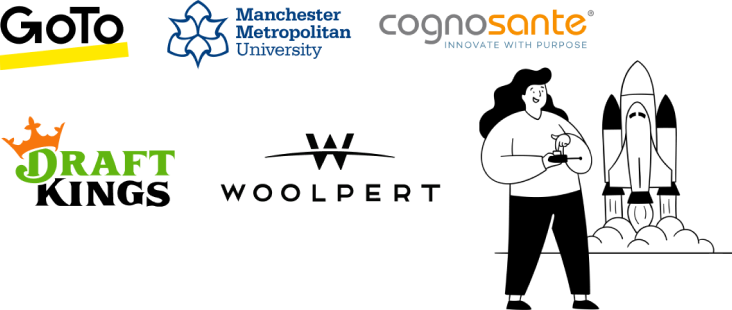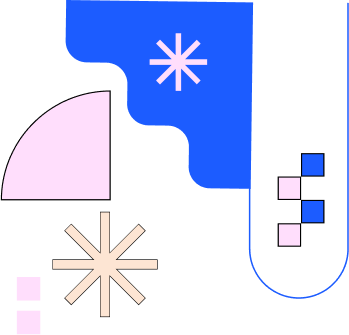
Building a Collaborative ITSM Ecosystem: MS Teams, Gen AI, and Human Touch

The IT department in your company keeps your operations running by taking care of the needs of your varied stakeholders—leaders, management, internal employees, helpdesk support, customers, etc.
A minor issue in your IT assets means a disconnected experience, creating ripple effects across the value chains.
A glaring fact is that IT issues will accelerate at a massive pace. 42% of respondents in a survey conducted by BigPanda pointed out digital transformation and increased dependency give rise to growing IT outages.
The best driving force to combat IT failure and facilitate IT resilience and business continuity is your ITSM.
However, a collaborative ITSM ecosystem can enable comprehensive service delivery and user experience. This ecosystem enables end-to-end communications and coordination across value chains, self-service for real-time issue mitigation, agent efficiency for critical problems, enhanced customer experiences, and business success.
With a collaborative ITSM ecosystem, your service desk can reimagine every aspect of IT services and user experience.
1. Why Is ITSM critical for IT and non-IT workflows?
ITSM provides a set of principles for IT leaders to maintain IT services efficiently. It offers tools and features to streamline workflows for communications that help with ticket creation, issue resolution, and restoration of the services effectively.
The core idea behind ITSM is to maintain IT resilience by reducing MTTR and eliminating the impact of issues in real time.
Not just IT support but also non-IT workflows can gain significant benefits from ITSM.
HR, finance, marketing, and other processes can use ITSM to design workflows for various use cases and drive success.
2. Why look for a collaborative ITSM ecosystem?
ITSM aims to drive business success by allowing self-service, communication and coordination, and agent efficiency.
But, information silo is a common challenge for most ITSM ecosystems.
Users continue to use their preferred medium of communication channels to raise issues the lack of a centralized information delivery channel makes it difficult to get visibility into real-time information in one place.
It takes time to capture information from disparate channels, make sense of the actual cause of problems, assign the right team to handle an issue, and ultimately mitigate it.
Without integrated data points, preparing solid root cause analysis or RCA reports and analytics is complicated, resulting in IT leaders struggling to suggest effective mitigation plans in advance and prevent repetitive issues.
If a company continues to work with an ITSM system in silo, it can have other challenges for its people.
A collaborative ITSM ecosystem helps remove all of these bottlenecks. It enables IT leaders to provide a streamlined process to maintain the overall health of an ITSM and help keep it efficient for everyone involved.
3. What Is a collaborative ITSM ecosystem?
An ITSM is collaborative when it provides end-to-end collaboration and coordination to enable real-time problem-solving by empowering human agents and users with AI-powered innovation, automation, and powerful integrations like MS Teams.
A collaborative ITSM eliminates the need to toggle between disparate tools for raising a ticket, makes it easy to find appropriate knowledge articles to solve common problems autonomously and boost agents’ efficiency to mitigate critical issues in minimal time to enhance user experiences.
When plugged into MS Teams, Workativ brings a collaborative approach to the ITSM ecosystem.
Its conversational AI that integrates with MS Teams brings the power of Generative AI to enhance search performance, simplify knowledge discovery, and reduce MTTR for real-time problem resolution for everyone.
4. How to use MS teams, GenAI, and human touch for a collaborative ITSM ecosystem
With an ITSM combining the power of MS Teams, GenAI, and human creativity, ITSM drives workflows towards efficient internal support, customer support, and successful business operations.
Let’s know how to turn your ITSM into a collaborative support platform with Workativ conversational AI.
Manage IT issues and requests.
By combining Generative AI inside a conversational AI for MS Teams bot, Workativ builds a highly efficient collaborative ITSM infrastructure that reduces human workloads in various ways.
Generative AI-powered search feature for a conversational AI bot reduces the time it takes for users to find relevant information about any issues instantly.
Workativ helps ITSM leaders build large language models with cases relevant across the industry and domain-specific use cases.
Applying the world of knowledge, including specific industry data, Generative AI in Workativ conversational AI makes it easy to retrieve information specific to IT and non-IT scenarios in consolidated forms along with citations.
It is easy for users to leverage only relevant information to solve a specific issue instead of going through an entire article and increasing MTTR.
At a time when citations ensure the veracity of information, users become more confident in using self-service for common IT issues.
This helps agents avoid addressing repetitive issues and instead use creativity to solve critical issues for higher tiers in the ITSM.
When Workativ allows agents to use a shared live inbox, it brings all agent interactions into one screen, enabling everyone to leverage real-time updates of issues. As a result, if an agent struggles to offer the proper recommendations for a specific case, a more skilled or expert agent can arrive to help and reduce MTTR.
Another effective use case of a shared live inbox that simplifies interaction for agents and accelerates crisis response is LLM-powered recommendations for chat. Using internal knowledge bases, Generative AI can recommend suitable AI-powered suggestions to reduce the time to craft a response yet communicate effectively to mitigate an issue.
Ultimately, faster crisis communication and response help reduce MTTR and maintain ITSM SLA.
Enable collaboration and knowledge sharing.
MS Teams is always known for its powerful tools and features to help build a unified workspace where every employee loves working.
Keeping in mind user preferences, Workativ allows them to use Teams to communicate and coordinate over familiar and complicated workplace issues.
Internal employees can use Teams to autonomously address issues, including password reset, account unlock, user provisions, software installs, onboarding, PTO inquiry, and so on, by retrieving information at scale.
The key essence here is that users can leverage Teams to get and share information to help each other.
To keep agents efficient or the shift-left process effective, Workativ allows early-stage or novice agents to leverage the MS Teams bot to capture essential information by interacting with senior teams in a collaborative discussion thread and gaining valuable information to solve a critical problem.
On the other hand, agents can leverage shared live inbox in MS Teams bot to keep track of ongoing issues��—how many tickets are open, in queue, and closed.
In addition to having the latest ticket updates, agents can use the ‘mention’ or @ feature to tag someone with high-level expertise to seek instant help with knowledge articles or valuable tips for mitigation.
Build user-centric ITSM
Workativ conversational AI is a no-code intuitive chatbot builder that turns use cases into workflows for an ITSM platform and brings them directly to your MS Teams chatbot through a connector.
It is a familiar interface that can easily serve as a self-service interface for your users to handle ITSM-related workflows.
Instead of having the nuances of working inside a self-service platform of an ITSM tool, MS Teams delivers a user-friendly interface to find knowledge quickly, raise a query, and ask questions about ticket status all within MS Teams.
By integrating large language model capabilities with conversational AI for the MS Team bot, users and agents can find information at scale and reduce the length of time needed for problem resolution.
With Workativ, users gain the benefits of Generative AI and MS Teams that boost interactions, efficiencies, and user satisfaction.
Leverage predictive analytics and reporting for KPI improvement.
With legacy ITSM infrastructure, leaders can have data, but more is needed to create comprehensive KPIs and drive towards a proactive ITSM.
A usual scene with legacy ITSM is that the same issue can be too repetitive to take away fair enough time from service desk agents, ultimately impacting SLA compliance.
When you leverage Workativ, you can harness powerful Generative AI capabilities known for capturing comprehensive datasets, which further help generate key performance indicators such as user experience, trends of issues, tickets sent, tickets resolved, etc.
As you keep using Workativ to handle ITSM issues, you can leverage advanced insights into the KPIs you build and analyze the performance of your ITSM.
For example, if the KPI for CX is slightly impacted for the use case password reset issues, you can use datasets to redesign your workflow automation and improve service requests as well as the future performance of ITSM.
5. Benefits of the integration power of collaborative ITSM
If your ITSM is disparate, your teams and customers can have a disconnected user experience. A collaborative ITSM eliminates existing challenges with a legacy ITSM and builds a proactive ITSM, which ultimately helps you gain multiple benefits.
6. Embrace AI-driven collaborative ITSM with Workativ.
Every company has some sort of IT assets. The bigger the IT infrastructure, the bigger the problem is. SMBs can also have pain points for the growing IT challenges. However, non-IT workflows are pretty concerning for ITSM leaders.
Legacy ITSM needs more features and automation to provide a collaborative infrastructure for ITSM.
Workativ, with its conversational AI for MS Teams, provides a platform that elevates human creativity to tackle more challenging issues using Generative AI properties.
By improving communications, empowering human agents and users, and reducing MTTR, Workativ gives you the true essence of collaborative ITSM.
If you want to leverage Workativ for a collaborative ITSM ecosystem, schedule a demo today.
In this Blog


About the Author

Deepa Majumder
Deepa Majumder is a writer who nails the art of crafting bespoke thought leadership articles to help business leaders tap into rich insights in their journey of organization-wide digital transformation. Over the years, she has dedicatedly engaged herself in the process of continuous learning and development across business continuity management and organizational resilience.
Her pieces intricately highlight the best ways to transform employee and customer experience. When not writing, she spends time on leisure activities.

